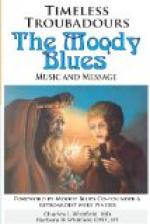The Provencal biography, like the romance of the Chatelain de Coucy, belongs to the thirteenth century, and the story cannot be accepted as authentic. But the period of decadence had begun. By the close of the twelfth century the golden age of troubadour poetry was over. Guiraut de Bornelh’s complaints that refinement was vanishing and that nobles were growing hard-hearted and avaricious soon became common-places in troubadour poetry. The extravagances of the previous age and the rise of a strong middle and commercial class diminished both the wealth and the influence of the nobles, while the peace of the country was further disturbed by theological disputes and by the rise of the Albigeois heresy.
CHAPTER VI [75]
THE ALBIGEOIS CRUSADE
The feudal society in which troubadour poetry had flourished, and by which alone it could be maintained, was already showing signs of decadence. Its downfall was precipitated by the religious and political movement, the Albigeois Crusade, which was the first step towards the unification of France, but which also broke up the local fiefs, destroyed the conditions under which the troubadours had flourished and scattered them abroad in other lands or forced them to seek other means of livelihood. This is not the place to discuss the origin and the nature of the Albigeois heresy.[26] The general opinion has almost invariably considered the heretics as dualists and their belief as a variation of Manicheism: but a plausible case has been made out for regarding the heresy as a variant of the Adoptionism which is found successively in Armenia, in the Balkan peninsula and in Spain, and perhaps sporadically in Italy and Germany. Whatever its real nature was, the following facts are clear: it was not an isolated movement, but was in continuity with beliefs prevalent in many other parts of Europe. It [76] was largely a poor man’s heresy and therefore emerges into the light of history only when it happens to attract aristocratic adherents or large masses of people. It was also a pre-Reformation movement and essentially in opposition to Roman Catholicism. Albi was the first head-quarters of the heresy, though Toulouse speedily rivalled its importance in this respect. The Vaudois heresy which became notorious at Lyons about the same time was a schismatic, not a heretic movement. The Vaudois objected to the profligacy and worldliness of the Roman Catholic clergy, but did not quarrel with church doctrine. The Albigenses were no less zealous than the Vaudois in reproving the church clergy and setting an example of purity and unselfishness of life. But they also differed profoundly from the church in matters of doctrine.




